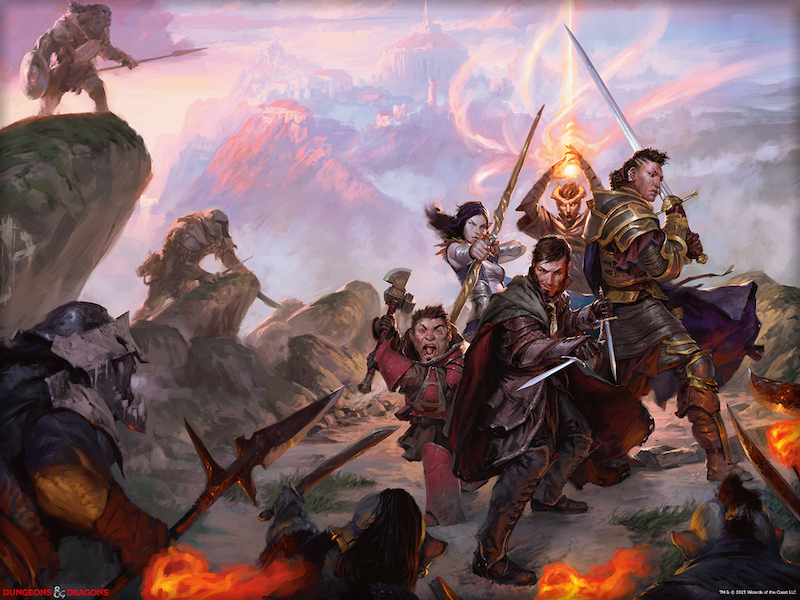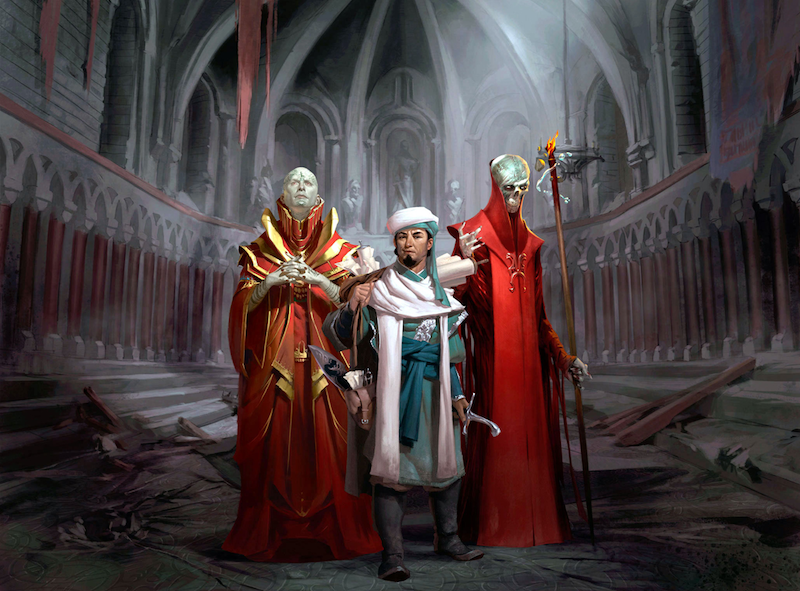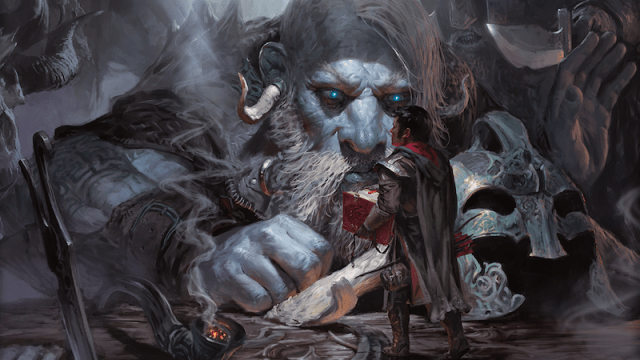The shadow of last week’s devastation hung over this weekend, and to cope, I turned to my favourite tool for escapism: Dungeons & Dragons. On short notice, though, my partner and I didn’t have time to gather a whole party. But damn did we want to play.
Volo’s Guide to Monsters
He had read through the 5th edition mini-adventure Harried in Hillsfar, fan content from the D&D platform the Dungeon Master’s Guild, and was charged with excitement to run it. So he suggested we just play together, me and him. My fear of embarrassment didn’t outweigh how much I wanted my escapism fix, so we tried it out. The take-away: Two-person D&D is not only possible, but a way to intimately engage with the role-playing game, so long as you overcome the potential for awkwardness.
Two-person D&D is not as lonely as it sounds. Yes, Dungeons & Dragons is a social experience by design. Most D&D adventures say they require a rounded party of three to five players including, probably, a tank, a DPS, a healer and spell-caster. Together, the party takes turns fighting enemies, role-playing and devising solutions to problems. It’s collaborative gaming. I imagined that two-person D&D would be me, talking to myself and repeatedly axing an orc until it died: Truly, truly awkward.

Sword Coast Adventurer’s Guide
Frankly, though, that’s the basis for most RPGs. The main difference between, say, Legend of Zelda and two-person D&D is that the game’s rule set, environment and NPCs are expressed through human words and not code. I made a human fighter, a woman who had just escaped from her half-orc husband and carried a brutal battle axe. My partner, who was the Dungeon Master, also made a somewhat esoteric bard who roved around the world hunting for strange sounds. He controlled that character, and all of the NPCs, while I controlled my fighter.
I made decisions about what direction to explore, who to attack and how to speak to NPCs that, normally, would be a group decision. When a dying, old man fell out of the bushes and rambled off some freakish poem, I was the one to run over to him and take him to safety. When a pack of evil goats (yes) moved to attack, I made the judgement to draw first blood. It was incredibly engaging, that a person was unravelling a world, live, according to my whims.
Typically, the unpredictability of other humans is what makes these decisions exciting. But it was a fun break to be impulsive. The only trouble was that, if my character is naturally sceptical of all Drow, for example, I could miss major plot hooks offered by a Drow by earnestly role-playing her. Also, I wasn’t extremely competent at searching the environment or listening for enemies. Some people might find that frustrating. I’ve found that not being good at everything is what makes D&D scary. It adds urgency to each encounter. It was fun to be afraid that, while checking the ground for traps, I could miss something and suddenly be nabbed by a net and wheeled away by, maybe, evil cultists.

In combat, stewardship of the bard went to me. Fighting with both an axe and with bardic spells was, frankly, an improvement on regular combat, where I would take one action and then wait 10 minutes for four other players and some NPCs to take theirs. Sometimes, I zone out while other players are frantically looking up spells in the Player’s Handbook. Taking two turns kept me interested. Also, my partner lowered the number of enemies recommended by Harried in Hillsfar, so we had a fighting chance against them. He also entered a bystander NPC into combat alongside me to supplement my damage output.
After we played for a few hours, I looked online for adventures tailored for only two players. It turns out that RPG Now offers dozens of one-on-one adventures (not all for 5th edition). Modding a five-player adventure for two works, but I’d be curious to try one designed for this situation. A larger variety of NPCs for the Dungeon Master to choose from, for example, could help fill in role-playing and combat gaps my character suffered from. Also, having detailed maps empowers the player to really follow their whims and explore wherever they’d like. Less fleshed-out adventures might be not be so accommodating.
I’ve also read that another way to pull off two-person D&D is by having the player control two characters throughout role-playing and combat. To me, that would fulfil my fear of talking to myself like an idiot:
“I think we should go North!” I say.
“I think we should go South!” I respond.
“I think-,” and so on.
Maybe you’re braver than me. Who knows.
Overall, one-on-one Dungeon & Dragons is a good time. The highest hurdle, frankly, is the emotional buy-in. It can feel too intimate to role-play with just one other person. It’s scary. I’ve found that Dungeons & Dragons brings out the vulnerable side of gamers, sometimes unleashing parts of their personality that rarely see the light of day. With just one other person as a buffer, you can feel exposed. For me, that’s part of the excitement, and worth overcoming the potential for awkwardness.

Comments
2 responses to “Dungeons & Dragons Can Work With Just Two People”
The whole intimate aspect is why “lone wolfing” is a peseudo joke in the Tabletop community.
Mention it, and prepare for smart arsed lines about dimming the lights, lighting some candles and turning on the Barry White.
The missus and I ran a couple to help her build the confidence it takes to be a DM. We ran another with a close friend from our GURPS group and that helped too. I think she is ready to run full 5 character + campaigns.